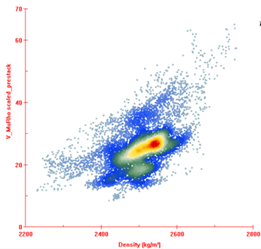Overview
Discover how to use quantitative interpretation (QI) techniques to get more insight and value from your seismic data. Improve the communication of this value to the rest of the team by translating geophysics to language and concepts that they understand: geology, resource development, and optimal production.
This course covers all aspects of a QI workflow from a high-level practical perspective.
Outline - 2 days
Day One
- Introduction: uses and usefulness of QI
- Rock Physics: inputs; outputs; how to build a good model; templates
- Well Data: quality assessment and conditioning; elastic property modeling; crossplotting; templates
- Seismic Data 1: well ties; quality assessment and conditioning; AVO (methods, velocity model, offset to angle, reflectivity)
Day Two
- Seismic Data 2: inversion (types, wavelets, model-building; post-stack, pre-stack, joint); multi-attribute analysis
- Classification: methods; pitfalls; integration; visual interpretation with QI-Pro
- Advanced Topics: converted-wave data (3C); time-lapse data (4D); microseismic; VSP; non-seismic data
Instructor
Laurie Weston is a physicist by training with more than 30 years in the energy industry as a seismic interpreter and analyst. She worked for large and small companies in basins around the world for the first 15 years of her career and then started a company to make advanced seismic analysis available to anyone. Part of that accessibility involved inventing software to visually integrate multiple seismic attributes for transparent translation to key geological and reservoir properties. Laurie has taught this course several times for many satisfied participants.
How to Access the Course
Contact us using the form below for information on a group or in-house booking. For a self-directed online version, contact our friends at Saga Wisdom, or watch the CSEG site for information on the next Doodletrain offering.




